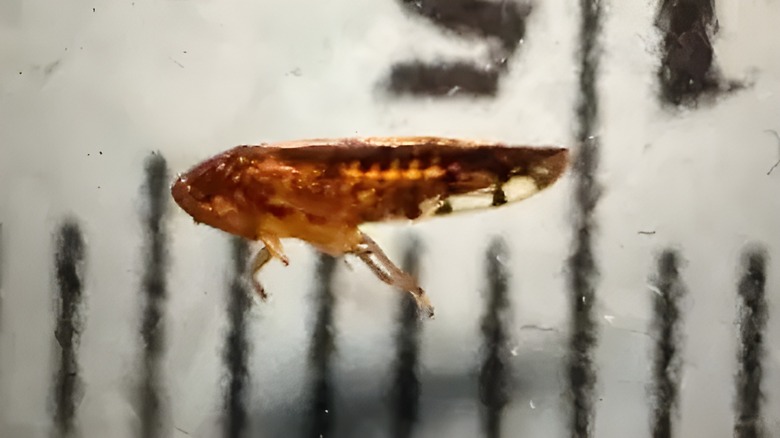Should Gardeners Worry About The Dangerous Pest That Just Came To The US For The First Time?
Recent reports about a new pest invading the United States have sent ripples of worry through the gardening community. The insect in question is Osbornellus salsus — a type of leafhopper that feeds on sap from grasses, trees, and shrubs. A new pest is clearly not something you want to deal with when you're already trying way too hard to banish sap-sucking scale insects from your trees, but you don't need to panic for now. Despite the headlines, Osbornellus salsus never actually made it into the country this time: U.S. Customs and Border Protection (CBP) Agriculture Specialists successfully intercepted the insect at the Port of San Luis, Arizona.
They came across this leaf hopper during a routine inspection of a radicchio shipment from Mexico. After the interception, CBP specialists sent the specimen to an entomologist within the USDA's Animal and Plant Health Inspection Service, Plant Protection and Quarantine division, which identified the insect as Osbornellus salsus. This marks the first-ever detection of this species in the United States. Then, as per protocol, the intercepted radicchio shipment was carefully contained and promptly returned to Mexico to prevent any potential risk of an infestation.
What is the Osbornellus salsus and what risks does it pose?
As its name implies, Osbornellus salsus comes from the genus Osbornellus, which belongs to the Cicadellidae family. There are nearly 100 species within this genus, including O. salsus. The data about this species is limited, but the insect has the typical leafhopper body that measures about 4 to 5 millimeters. The body is yellow to brown with some dark brown lines in the abdominal region. The general biology of leafhoppers suggests that they pose a considerable risk to plants and even carry and transmit plant diseases.
All members of this family, including O. salsus, feed on plants using their piercing-sucking mouthparts. They suck out sap and then excrete honeydew. The honeydew then attracts ants and sooty mold fungus, which makes things even worse for the affected plants. Despite the hazards these pests pose, there is nothing to worry about for now as far as gardeners in the U.S. are concerned. "CBP agriculture specialists are highly trained in detecting harmful pests. They do an excellent job in determining the admissibility of agriculture commodities," said Guadalupe Ramirez, Director of Field Operations for the Tucson Field Office, according to a media release by CBP. If you are still worried, check your plants for pests often to keep an eye out for Osbornellus salsus and other leafhoppers. Also, learn how to keep leafhoppers out of your lawn and garden.

